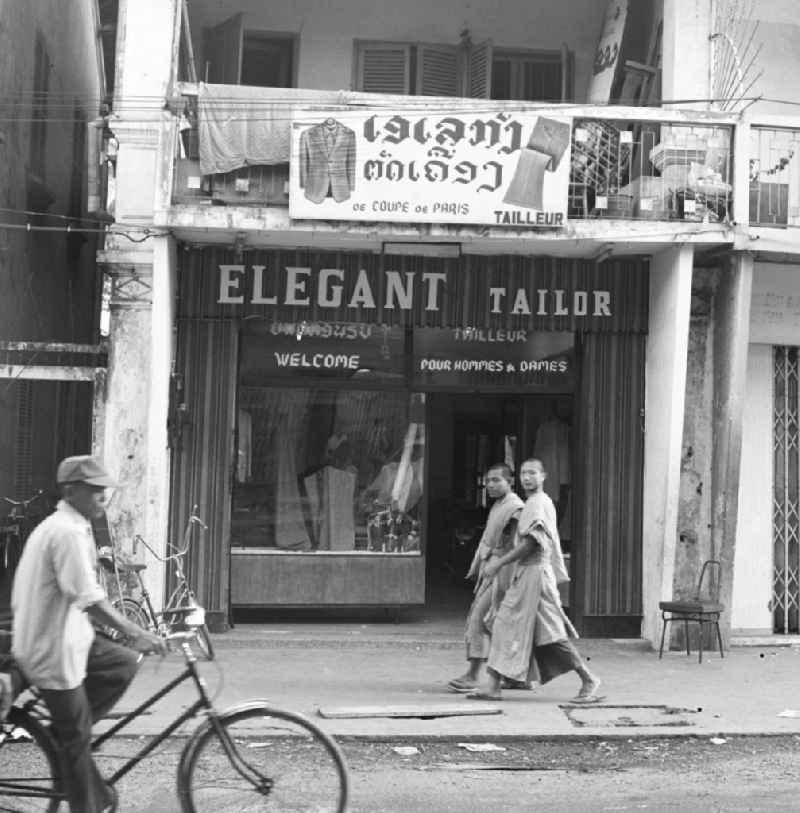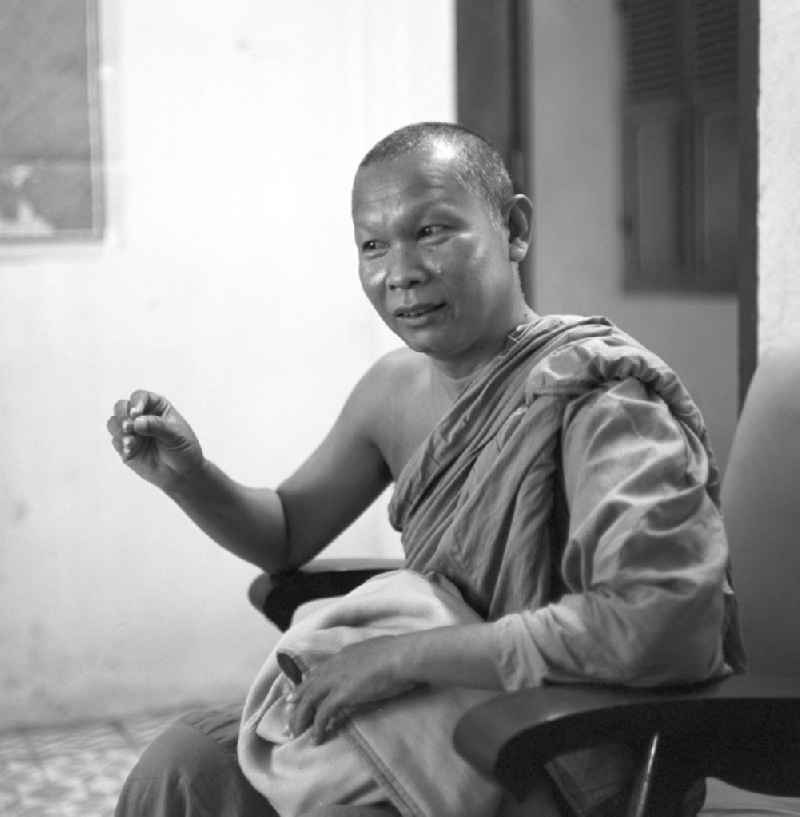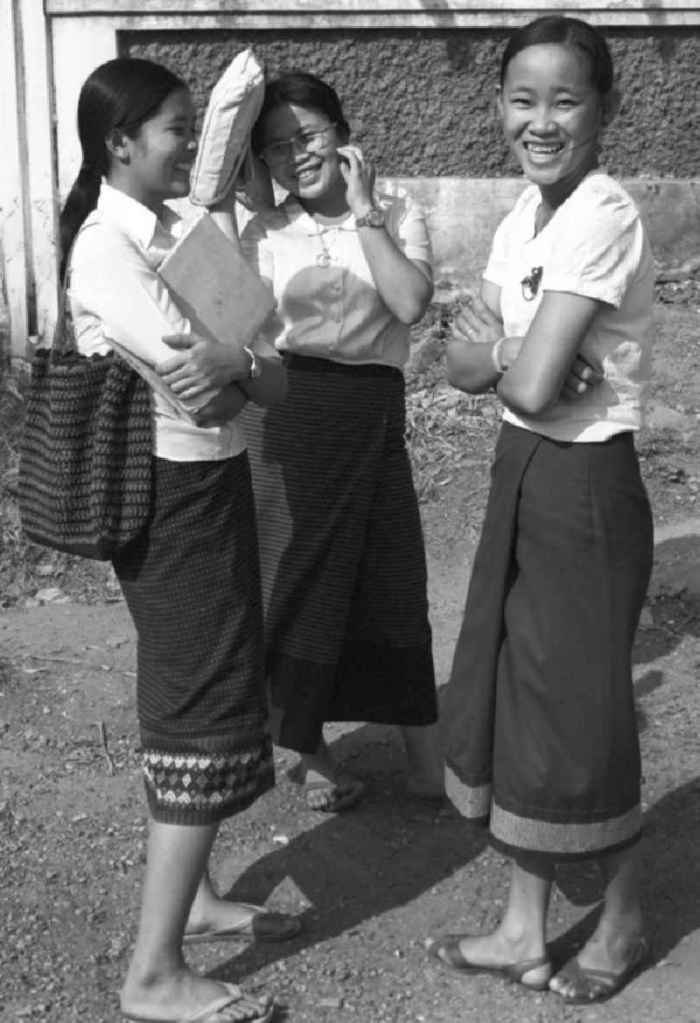One of the first European photographers to visit Laos soon after the 1975 revolution was Klaus Morgenstern (1939-2012), a German photographer from Leipzig. He was a graduate of Leipzig University of Graphics and Book Art and worked first as a photographer and photo laboratory technician with the East German “National People’s Army” in Thuringia. From 1972 on, he worked for the East Germany’s most important magazine, the Neue Berliner Illustrierte (NBI). During that time he travelled to the newly founded Lao People’s Democratic Republic to document everyday life and the country’s first steps in the transition to socialism in 1976-77. The East German interest in Laos goes back to the 1960s when aid was provided to the Pathet Lao. However, the first diplomatic relations between the Kingdom of Laos and the Federal Republic of Germany were established on 31 January 1958.

Aside from material aid during the Vietnam War, the German Democratic Republic (official name of East Germany 1949-90) also helped to develop professional training in Laos – a move that later developed into one of the pillars of Lao-East German cooperation. Following the Paris Peace Accords of January 1973, the provisional coalition government between Lao Royalists and the Pathet Lao began to establish official diplomatic relations with socialist countries, among them the GDR. Dietrich Jarck was the first East German ambassador accredited to the Kingdom of Laos in December 1974. After the proclamation of the Lao People’s Democratic Republic on 2 December 1975, the East German government aimed to strengthen their diplomatic relations with Laos and more concrete plans of bilateral cooperation were formulated. Relations with West Germany, on the other side, almost came to a standstill until the reunification of Germany in October 1990.

The digital photo collection of Klaus Morgenstern – comprising of over 700 photos taken in Laos – is held in the DDR Bildarchiv, a Berlin-based picture agency that has digitised the press photo archives of East German newspapers and private collections of photographers.
Morgenstern’s Laos collection covers seven topics of wider interest: Buddhism, education, health care, urban life, rural life, trade and crafts, Hmong people. The photographer’s mission was to create a realistic documentation of everyday life in Laos, with some images highlighting shocking truths of post-war poverty. This is contrasted by large amounts of photos depicting smiling and learning children as a symbol of hope for the country’s future.

About one tenth of Morgenstern’s photographs depict Buddhist monuments, monks and lay people in their everyday activities, including monks during their alms rounds and lay people making food offerings, monks gardening, monks and novices in schools. Among the Buddhist temples and monuments depicted in the photographs are the That Luang, Wat Sisaket, Wat Si Mueang, Wat Ho Pha Kaeo, Xieng Khuan Buddha Park – all located in or near Vientiane.


Education and the fight against illiteracy were seen as the major forces to drive social progress and economic development in socialist countries, so it is not a surprise that Morgenstern focused on documenting the efforts to establish schools across the country, for both children as well as adults. He also captured the teaching of vocational skills to adults in correctional facilities.


In addition to the educational efforts, the new Lao government paid much attention to building a socialist healthcare system, with the help of partner organisations from other socialist countries, including East Germany and Cuba, for example. A small portion of Morgenstern’s photo collection gives insights into maternity, pediatric and dental care in the capital Vientiane which was much more advanced there than in the rest of the country.

Morgenstern spent most of his time during his work trip in Vientiane Province. Apparently only a short trip took him to Luang Prabang as only three photographs were taken there. Roughly one fifth of his photographs depict scenes of everyday life in Vientiane, many of them documenting street scenes, modes of transport, markets and shops, people interacting, few monuments and buildings, and a small series of pictures of a wedding ceremony.

Alongside other East European countries, the GDR provided development aid in various sectors of the Lao economy, including agriculture, forestry and vocational education. In the 1980s, East Germany provided development aid worth over nine million Euros annually. In addition to promoting coffee cultivation and traditional crafts, the focus was on training around 2,000 Lao students and apprentices in East Germany and 15,000 in Laos itself. It is not a surprise that Morgenstern visited rural areas in Vientiane Province to document the situation of farming and efforts to build a modern socialist agricultural sector. Approximately a quarter of his photographs were taken in rural areas.

Other aspects of the post-war economy in Laos that Morgenstern captured in his photo documentation were small trade and crafts. He visited countless markets, workshops as well as newly emerging factories, including a rattan furniture factory, basketry and embroidery workshops, and weavers working at home on the traditional Lao hand-loom. A small series of particularly colourful photographs depict Hmong embroiderers at work and market stalls selling Hmong textiles in Vientiane.


Klaus Morgenstern’s photo collection comprising of over 700 photographs taken in Laos between 1976-77 can be accessed freely on the webpage of the DDR Bildarchiv.

Recent Comments